Fender amplifier
Leo Fender began building guitar amplifiers before he started manufacturing electric guitars. The first of these were the K&F models, produced between 1945 and 1946. The early K&F and Fender amplifiers relied upon vacuum tube circuitry, with the company adding solid-state models in the late 1960s.
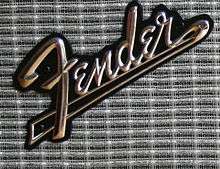
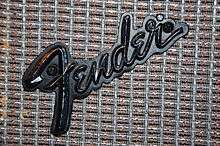
Early amplifiers: K&F and Woodie
The first "Fender" amplifiers were manufactured by Leo Fender and Doc Kauffman, doing business as the K&F Manufacturing Corporation.[1] In a steel case, most were finished in a "gray crinkle" finish, baked in the Kauffman family oven. They were made in three sizes, 1×8" (one 8-inch speaker), 1×10", and 1×15". They are all very rare today and few have survived.
The first amplifiers made in-house by the Fender Electric Instrument Company have been dubbed the Woodie series, built in 1946 through 1948. They included the Model 26 Deluxe, the Princeton, and the Professional.
Tweed models
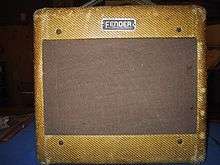
Fender amplifiers became established with the tweed series, wood cases covered in varnished cotton twill in the manner of suitcases of the era. (The nickname is a misnomer, as tweed is a coarse woollen fabric, often woven in a twill pattern.) They were produced for more than a decade. The first cloth used was an off-white fabric, followed by a horizontal-stripe two-tone pattern, and finally a two-tone twill.
The twill covering was first used in 1946 on the Dual Professional, a twin 10" 6L6-powered model of which only 400 were made before being renamed "the Super Amp" in 1948. These early models are referred to as "TV-Fronts" due to the shape of the cabinet when viewed from above. The Dual Pro was the first twin-speaker amplifier, and also the first to employ a finger-jointed pine cabinet and the amp with a top-facing control panel. The construction of the chassis was changed as well, mounted to the back with the tubes pointed down, as opposed to having the chassis mounted on the top of the cabinet. This has the benefit of providing ease of access to the inside while providing a strong top.
Fender largely ceased the twill covering in 1960, though the Harvard continued until 1963, and the Champ until 1964.
At the beginning of the "tweed" era, Fender constructed many of its cabinets in "TV front" style, changing around 1950 predominantly to the "wide panel", where the top and bottom panels are wider than the side. Fender later constructed them with "narrow panel", in which all the panels have more or less the same width. Toward the end, despite keeping such construction, Fender utilized Tolex to cover its amps.
Brownface (Brown and Blonde)

The Brownface series was introduced in 1959 and discontinued in 1963. This period marked the beginning of Fender's use of Tolex to cover amp cabinets. The name 'brownface' stems from the brown-colored control panels, common to both the brown- and cream/blonde- Tolex-covered amps. The brownface amps originally featured a dark maroon or "oxblood" grillcloth, which was changed to "wheat" in 1962-63.
The shift from tweed to Tolex occurred in limited production in 1960. The tolex on the earliest versions in this era was pinkish brown and rough textured. There were only six amplifiers covered in tolex originally, the Professional Series: Bandmaster, Concert, Pro, Super, Twin (production halted Feb-May 1960, resumed as the blonde Twin) and Vibrasonic. These were considered a step above the student models (Champ, Harvard, Princeton) which remained tweed-covered in 1960.
Grillcloth was initially the same as used in the previous tweed era, maroon with gold stripe. Beginning in mid to late 1961, Fender introduced another color combination: a smoother but still light brown tolex with a dark maroon or "oxblood" grillcloth. By mid-1961, after this short-lived look, Fender was using the darker brown tolex which was a mainstay for many of the mid-1961 to 1963 amps. Between 1961 and 1963, there were three different grillcloth colors: wheat, brown, and maroon and many tolex-grille color combinations are found suggesting that Fender was not reluctant to use up whatever stocks of materials were on hand.
The Brown amplifiers included all of the all-in-one combo models except the flagship Twin and Vibrasonic, and the little Champ which retained its "tweed" (twill) covering. The Blonde amplifiers included all of the piggyback Fender amps (the Tremolux, Bassman, Showman, and Bandmaster) as well as the Twin and Vibrasonic combos. Two different colors of grillcloth were featured on the blondes, oxblood and wheat. There are several experimental Fender Tweed amps in blonde. While the majority of the piggybacks were produced in blonde tolex, there are a few examples of the brown tolex Bassman amplifiers.
Accomplishments for the company's amplifier division during these years include the introduction of the stand-alone spring reverb unit in 1961, followed by incorporation of the reverb circuit within a combo-amp design with the 1963 Vibroverb. Other changes include the shift of the top-of-the-line model from the traditional Twin to include other models, like the Vibrasonic in early 1960, as well as the blonde Showman in 1961. Fender began using silicon rectifiers to reduce heat and voltage sag caused by tube rectifiers, and introduced an all-new, very complex Tremolo circuit (or, as it referrd by Fender - "vibrato").
The Deluxe made the transition in 1961. The circuit was also changed to include a tremolo effect, and the output was increased.
As the brown-era wore on, the plight of the smaller amps was varied. They all remained in name at least except for the 1x10" Harvard which was not continued through 1961.[lower-alpha 1] The 1x8" Champ-Amp remained a tweed-covered through 1963 and into 64 when it made the change to black tolex. The 1x10" Vibrolux remained a tweed amp until it was upgraded in 1961 to a single 12" speaker powered by a duet of 6L6 power tubes and a larger output transformer. Also upgraded from tweed was the Princeton which acquired its brown tolex in 1962 along with a completely redesigned, more powerful twin-6v6 circuit and a larger speaker array: 1x10".
Blackface
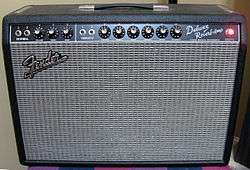
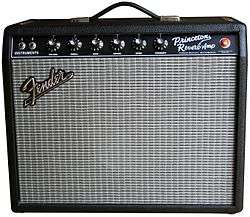
The Blackface amplifiers were produced between 1963 and 1967 (some units continued to be made into early 1968). The earliest blackface piggyback and large combo amps (Twin) had bodies covered in blonde tolex, with the new black control panel. The white control knobs continued briefly before giving way to black skirted "hat shaped" numbered knobs. New circuitry featuring bright switches. In 1964 the piggyback units began to be covered in black tolex. The blackface cosmetics were phased out at the end of 1967 (though some continued to be made on into early 1968); they returned for a brief period in 1981 before their discontinuation the following year. John Lennon used a circa 1963 non-reverb Fender black face Deluxe amp. It can be seen in the Revolution clip and in Hey Jude Clip. He loved the amp and it had a different sound from the Deluxe Reverb model.
Blackfaced cosmetics do not necessarily mean "pre-CBS" since the CBS company takeover took place in 1965 and amps with blackfaced cosmetics were produced up to 1967. After the buyout the front panels were changed from "Fender Electric Instrument Co." to "Fender Musical Instruments". No real changes were made to the amps until the silverfaced amps of 1968 where certain circuit changes made them less desirable than the blackfaced amps. This affected some models more than others. For example, the Twin Reverb and Super Reverb combos, along with the Dual Showman Reverb and Bandmaster Reverb "piggyback" heads were equipped with a master volume control while other models such as the Deluxe Reverb were not altered in any way except for the change in cosmetics.
Silverface cosmetics do not necessarily denote silverface circuitry, however. Leo Fender was notorious for tweaking his designs.[2] During the transitional period from late 1967 to mid-1968, the circuit designs of the Twin Reverb and Super Reverb were altered to eliminate an uncommon but serious oscillation in the signal chain. These changes took some months to finalize, as Leo worked through some designs, and happened after the cosmetic changes. Furthermore, the schematic and tube charts that shipped with these models did not always reflect the actual circuitry. Fender had many leftover AB763 (blackface) tube charts left over well into 1969 and shipped these charts with silverface models.
Save for a few series (such as HotRod series), a majority of modern Fender amplifiers sports blackface cosmetics.
Silverface
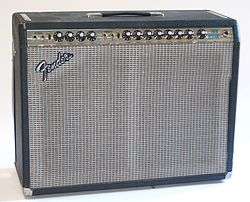

Fender Silverface amplifiers were built between 1967 and 1981. They are often referred to as Silverface (or Chromeface) because of their brushed aluminum face plate.
The first Silverface amps, manufactured between 1967 and 1969, had an aluminum frame (trim, known as a "drip edge") around the grillcloth, mid-1960s "tailed" amp logo and the AB763 blackface circuit. An even rarer feature were the vertical, narrow black lines, which separated knob groups in the control panel. This cosmetic detail (later referred to as "blackline") was quickly abandoned. All of the Silverface amps generally had blue labels on the face plate, but in some rare exceptions (such as the Bronco) the colour was red instead. Some transitional models produced before the "tailless" period in 1973 featured the AC568 circuit, still retaining the tailed Fender amp decal introduced in 1964.
In 1973 CBS changed the "tailed" Fender amp logo to the modern-looking "tailless" style (which was first introduced in 1967 on the student Bronco amp). A master volume knob and a pull-out "boost" pot were added on some amplifiers, followed by ultralinear output transformers and a "scripted tailless" amp decal (featuring a "Made in USA" script in the bottom) in 1977; the power was increased between 70 and 135 watts on certain models.
All Silverface models usually came with a sparkling silver/blue grillcloth (some later models had a non-standard sparkling silver/orange grillcloth, and a black grillcloth was even fitted to some production runs). The Silverface control face plate was discontinued in 1981 and replaced by the second series of the blackface amps.
Fender made a limited-edition Mini-Twin practice amplifier modeled after the mid-70s Twin Reverb models in 1996. The Silverface Edition MT-10 had the authentic look right down to the grillcloth. This 1-watt Twin featured 3 in. speakers, "skirted" style Fender knobs for Gain, Volume, Tone and Power and included a tilt-back stand.
In 2013, Fender released the silverface '68 Custom amplifiers as a part of their Vintage Modified series, modeled after the original drip-edge silverfaced amps of 1968. Models included the Twin Reverb, Deluxe Reverb, and Princeton Reverb, and a Vibrolux Reverb was added to the line the following year. Each amp incorporates reverb and tremolo on both channels. Other features include a Custom channel (which has a modified Bassman tone stack giving modern players greater tonal flexibility with pedals), quicker gain onset and reduced negative feedback for greater touch sensitivity.
Early solid-state models
Fender's first transistor amplifiers were introduced in 1966. At the time they were the company's "flagship" range and aimed to make the tube-based designs obsolete. The amplifiers were naturally given traditional Fender model names, earliest including 'Dual Showman', 'Twin Reverb', and 'Bassman'. Other products in the line were the 'Solid-State Reverb Unit' and the 'Solid-State Public-Address System'. 'Super Reverb', 'Pro Reverb', 'Vibrolux Reverb' and 'Deluxe Reverb' amplifiers followed in 1967.
The amplifiers were mainly designed by Robert "Bob" Rissi, Sawa Jacobson and Paul Spranger, who came up with the novel idea of making a heatsink to operate like a chimney to achieve increased and non-restricted airflow. Paul also designed the distinctive angled chassis and overall cosmetic styling. He was granted patents for both accounts.
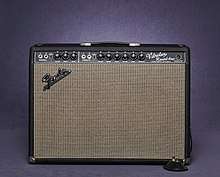
In 1969 more transistor amplifiers were introduced, including the 'Zodiac' series and the behemoth 'Super Showman System'. Seth Lover, the legendary designer of the Gibson "P.A.F." pickup, and another former Gibson employee, Richard Chauncey Evans, were hired to help in designing the latter series, which consisted of an 'SS-1000' preamplifier head and 'XFL-1000' and 'XFL-2000' self-powered speaker cabinets. The head featured three cascadable channels, a "Dimension V" oil can delay effect, reverb, vibrato, and a fuzz. The powered cabinets could switch between normal and "tube-emulated" operation.
Zodiac-series amplifiers consisted of 'Capricorn', 'Scorpio', 'Taurus' and 'Libra' models. Aside from being covered with fake alligator skin, they were cosmetically very similar to Super Showman. However, these were smaller combo amplifiers with fewer features and aimed for the lower end of the market.
Fender's early transistor amplifiers had an extensive marketing campaign but in the end they proved to be a major disaster. Many key executives of Fender had resigned after the CBS purchase and quality control of the PCB-constructed amps was rather sloppy during the times. Reputedly many of the early solid-state amplifiers failed simply because employees didn't bother to clean up the soldering machines or attach the semiconductors properly to their heat sinks. The infancy of semiconductor technology also meant that many designs failed due to thermal runaway caused by insufficient cooling or lack of knowledge concerning "safe" power ratings of transistors. The cascaded effects from all this created a very poor reputation for the transistor products and the entire solid-state line was discontinued already in 1971. Additionally the experience also scared Fender away from solid-state amplifier technology for the next ten years.
One well known player who took to the Fender Solid State amps was Jan Akkerman who used Super Showman full stacks during the early years of Focus, favouring their clear sound. He used them well into the seventies, often in conjunction with Marshalls to add low end.
Second series blackface
The Silverface amplifiers were succeeded by a new breed of Fender designs. Fender was now competing with manufacturers who were more in tune with the market; specifically, many guitar players were interested less in "cleanish" country amp and instead wanted more versatile tone controls and, perhaps more importantly, greater amounts of distortion. This market was dominated by companies such as Marshall and later Mesa Boogie—both of which had gotten started modifying Fender amps (the Bassman and the Princeton, respectively).
Certain elements of the Blackface cosmetics were reintroduced in the mid-1970s on a series of amplifiers designed by Ed Jahns. The first amplifiers in this new line included the infamous 180W 'Super Twin' and 'Super Twin Reverb' amplifiers which featured active tone controls and a built-in distortion circuit that blended between clean and distorted sounds. Some bass amplifiers with similar architecture were also released, namely the 'Studio Bass' and 'PS300'.
These amplifiers didn't yet render obsolete the Silverface series and manufacturing of both co-existed for years. In fact, many Silverface designs were revised to the ultra-linear architecture to step up their output power from 100 watts to 135 watts. Also, existing Silverface Princeton Reverb and Deluxe Reverb circuits were offered in a slightly modified Blackface cosmetic package from roughly 1978 to 1982, the difference from the 1960s versions being that the model designation on the faceplate did not include the word "Amp" after the script typeface model name, as the earlier versions had.
The new Blackfaces came in varying cosmetic styles. All of them had a black control panel and traditional knobs, but they no longer featured the Blackface-style lettering to depict the model name and the traditional control panel layout was partially redesigned. Some of these amplifiers had a silver grillcloth typical to previous BF and SF series amps, but more often the amplifiers sported a black grillcloth. Some amplifiers also had an aluminum trimming running around the grille. The styling didn't become consistent until the early 1980s, at which point all these designs were already discontinued to make way for the very similar looking "II Series".
In the late 1970s and very early 1980s the "Supers" were followed by the tube-based '30', '75 (Lead)', and '140' tube amps (with reverb and overdrive features) and two solid-state 'Harvard' amps (one with reverb), which were 15W practice amplifiers. Design-wise the tube amplifiers were quite different from their predecessors, as the active tone controls and blending distortion circuit had been removed and the latter feature replaced by a crude version of the channel switching concept. A new feature addition was a crude insert-style effects loop.
II Series and the Rivera Era
The II Series amplifiers[3] were produced from 1982 until 1986, being the last Fender amps to be made at Fullerton. The specifications for these amplifiers (all 14 of which are listed here), and leadership of the design team, came from Paul Rivera (then marketing director) and are known as Fender Rivera era amplifiers. Some amplifiers in the series used the II moniker; the Champ II, Princeton Reverb II, Deluxe Reverb II and Twin Reverb II, while others such as the Concert and Super Champ did not. Many of these amps had the normal Fender clean sound and in addition a switchable mid voiced gain channel, designed to compete with the Mesa Boogie Mark Series series amps that had gained popularity at the time. The tube amps in the series feature hand-wired eyelet board construction and are also becoming sought-after collectors items, due to the design and build quality. The range included one small tube-driven bass amp, the Bassman 20. There were also some solid-state amplifiers using the II moniker, such as the Harvard Reverb II. Other solid-state amps produced during the Rivera era included the Yale Reverb, Studio Lead, Stage Lead, London Reverb, Montreux, and a solid-state issue of the Showman. Many of these units shared the same circuitry boards in one capacity or another.
Red Knob
The Red Knob amplifiers were produced from 1987 until 1993. They were made in Lake Oswego, Oregon, at the Sunn factory, a brand/company that Fender had purchased in 1985–86.
These were some of the first models produced by the newly formed Fender Musical Instrument Corporation. Aside from the bright red controls, these amplifiers have a slightly similar appearance to the older Blackface cosmetics, bearing black control panels with white lettering and the late 1970s "scripted tailless" Fender logo. Many of these models were simply refitted with black knobs and early 1970s "unscripted tailless" Fender logos in 1996 when most Fender amplifier manufacturing moved to the Ensenada factory in Mexico. This series of amplifiers all used printed circuit board construction.
Two utilized the same circuit board and wattage, the Fender Eighty-Five and the Studio 10. They contain the same 65 WRMS circuit, but contain a 12" speaker and a 10" speaker, respectively. The Fender Eighty-Five was used by Steve Miller (Steve Miller Band) and Jonny Greenwood (Radiohead) on many recordings.
The 21st Century: reissues and modeling
In the first fifth of the 21st Century, Fender turned to digital technology to expand its lineup of amplifiers. The first of these, the Cyber Twin and Cyber Deluxe, used circuits within the computer chips to replicate famous amps and effects. The preamp is tube-driven, and the power amp is solid state.[4]
Next came the G-DEC (Guitar Digital Entertainment Center), a true modeling amp. It was released in 2007 along with a PC software package to allow it to emulate a wide array of pedals, stompboxes, and amplifiers. The G-Dec won high praise at the time but its effects, based on three-decade-old MIDI technology, were rapidly outdated. An updated G-DEC 3 was released in 2010, followed by the Mustang in 2012.
2014 saw the traditionally-styled Champion amplifier (not to be confused with the classic and reissue Champion/Champ tube amplifiers) released. This amp eschewed the Fuse software in favor of an on-board system, selected by knobs.
2015 saw the release of the Mustang v.2 amplifiers, along with a refresh of the Fuse PC app. In 2017, the Mustang GT series was launched, with Bluetooth capability and wi-fi for over-the-air software updates, with a modernized look and smartphone-enabled functionality through the new Fender Tone app.
At the same time, Fender re-released a number of classic amplifiers such as the Bassman and Bandmaster, to high praise both from the music press and the public.
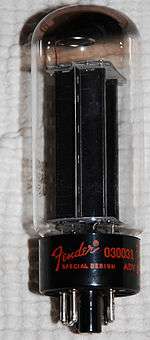
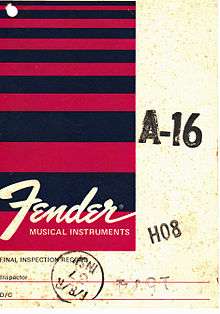
Notes
- However, in 1962-63 Fender built a small number of "Harvards" which were actually assembled from leftover tweed-Princeton parts, with Harvard nameplates.
References
- Wheeler, Tom (Thomas Hutchin) (2007). The Soul of Tone: Celebrating 60 Years of Fender Amps. Milwaukee, WI: Hal Leonard Corporation. ISBN 978-0-634-05613-0.
- Gagliano, Greg. "Dating Fender Tube Amps". 20th Century Guitar. Archived from the original on 8 October 2007. Retrieved 25 September 2007.
- "Guitar Amplifiers" (PDF) (catalogue). Fender Musical Instruments. 1983. Archived from the original on April 2011. Retrieved 19 April 2017.CS1 maint: unfit url (link)
- "What do the tubes do in a Cyber Twin [sic]" (discussion forum thread). Music Player Network. December 2003.